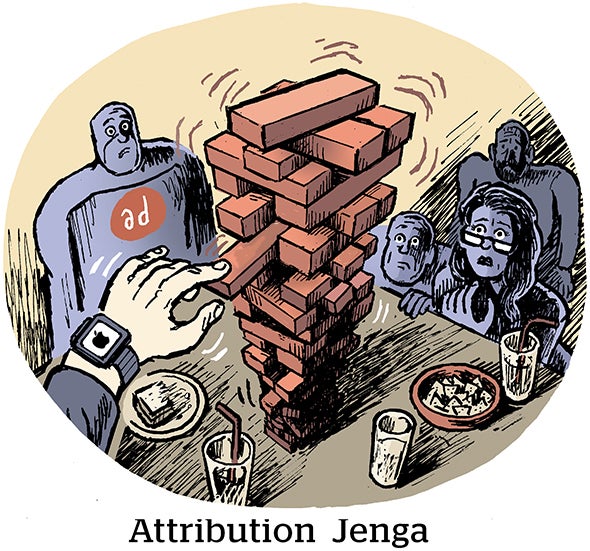(Promo) U.S. shoppers can expect to see a lot more red this year as Product RED, a celebrity driven charity, adds new partners and products. But it remains to be seen if the venture will hold up over the long haul.
Founded by Bono and fundraiser Bobby Shriver, Product RED is based on a classic cause-marketing tactic: the donation with purchase. Licensed firms sell RED-branded products, then donate part of the money to the Global Fund to Fight AIDS, Tuberculosis, and Malaria.
And despite blog items decrying “khaki colonialism,” it seems to be working. U.K. consumers have purchased an estimated $200 million worth of RED goods since the launch there in March, resulting in $10 million in donations to the Global Fund.
The U.S. version, launched in October when Bono and Oprah Winfrey went shopping in Chicago, has generated an estimated $80 million-$96 million in six weeks. And about $6 million-$7.2 million has already been donated.
And that may be due to the roster of licensees RED has assembled in the U.S.: Gap, Motorola, Apple, Giorgio Armani, and Converse. Together they are offering 75 special products, everything from sneakers to cell phones.
But Product RED is built as a licensing company, not a charity. And observers say it could revolutionize cause-related marketing.
“Product RED borrows on ideas that have been used a lot, but its scale makes it different,” adds Stacy Palmer, editor of “The Chronicle of Philanthropy.” “People are getting bombarded by RED. You bump into it everywhere.”
The main difference is its business model. RED’s founders are adamant that this is a “commercial initiative.” And the licensees are thinking of it that way.
Take the Gap. Initially the firm wanted to give 100% of its profit, but Bono and Shriver refused, says Julia Cordua, vice president of marketing for Product RED. “They didn’t want a one-time event. They want five to 10 years of ongoing donations.”
But Gap soon started treating it like a business. For starters, it has spent $25 million on marketing. Part of this went into an ad campaign in which celebrities including Christy Turlington and Chris Rock were photographed in RED attire by Annie Leibowitz. These portraits were included in print and outdoor ads, and graced Gap store windows during the holidays. The celebrities donated their paychecks for the ads to the Global Fund.
In addition, Gap has set up RED boutiques in its top 200 stores and smaller displays in the rest of its nearly 1,300 outlets. The products include T-shirts and jeans.
These efforts drew a predictable return. The RED T-Shirt is already the best-seller in Gap’s 35-year history, says Gap spokesperson Erica Archambault. Even better, Gap generated an estimated $60 million-$71 million in revenue and has donated an estimated $2 million-$2.5 million to the Global Fund, enough to pay for AIDS medication for 14,000 Africans for a year, she adds.
But here’s where the business model comes in.
Brand marketers such as Gap sign a five-year licensing deal and get category exclusivity. They also commit to developing a line of high-quality items that are central to their portfolio. In addition, licensees must specify that their RED goods are the same or better quality as their flagship products. And they can’t be priced at a premium.
Donations vary by licensing contract. Gap donates 50% of its profits after marketing costs. (Sounds like a lot, but Paul Newman donates 100% of the profit of Newman’s Own, his food brand, to charity.) Armani contributes 40% of its gross profit from RED sales in its Emporio Armani stores; the price tags range from $58 to $228.
Motorola chips in 8%-10% of the price of its $165 RED MotoRazr phone and its $60-$70 Bluetooth H500 headset. Converse is forking over 10% of net wholesale sales of its RED shoes, priced from $47 to $140, and as a special contribution, it is kicking in 15% from each purchase of its $60 version, Make Mine RED, for which online shoppers can choose their own colors and detailing.
But some observers question the use of profit rather than sales as the basis for donations. Savvy nonprofits push sales-based contributions because they are more concrete — that is, they depend more on the consumer’s actions than on the marketer’s accounting.
Thus, if RED takes hold, it could rewrite corporate giving. The Global Fund gets less than 1% of its funding from private businesses, but that number could ramp up as brands show their marketing prowess.
The venture could also alter the way charities are marketed. Bono and Oprah drew a mind-boggling 1 billion media impressions worldwide last October when they took their walk down the Magnificent Mile.
“It’s definitely the launch of the year, the highest profile new [cause] campaign of 2006,” says David Hessekiel, founder of the Cause Marketing Forum.
So RED has star power. But does it have staying power? A GfK Roper survey taken last month found that only 20% of consumers always try to buy goods from companies that back causes they support. Thirty percent sometimes buy based on cause tie-ins, and 14% never do.
Worse yet, only 12% believe that corporate donation claims are completely credible, and 17% don’t believe marketers’ claims of nonprofit donations at all, according to Roper.
This cynicism has been reflected in blog postings. Critic Michael Medved charged that “big companies are using the (RED) association as an excuse to jack up their prices on ordinary merchandise to ridiculous levels, and not all the difference in price is actually going to the charity. Consumers would do far better to buy the regular non-(RED) products and then give their own contributions directly to the charity of their choice.”
These opinions have apparently not hurt sales. But RED’s long-term success will depend on how well its licensees maintain marketing support after their holiday-season blitz — and if they keep socially conscious customers engaged.
Insiders say they can do it. “These are iconic brands that appeal to younger consumers, who are very interested in buying cause-related products,” “Chronicle” editor Palmer says. And she notes that older consumers are also buying RED products.
Another key variable is Product RED’s ability to attract new licensees. It expects three or four to sign up this year in high-volume product areas.
“We haven’t yet penetrated categories where you shop every day,” Cordua says.
The first U.K. licensee, American Express, has not yet decided to launch a RED card in the U.S. “The product is very new, and it takes time to see how a credit card is working,” says AmEx spokesperson Judy Tenzer.
The Product RED team works on candidates for several months. “If there’s a fit, that partner becomes RED,” Cordova says. “That’s why we’re growing very slowly. We don’t want to get too big.”
That plays in the marketplace as a rather exclusive club. “It’s unique to have so many prestigious companies making specific products for the cause,” Palmer says. “And the idea of these brands working together on a project is unusual.”
Unusual, too, is the way the business model marries corporation to cause.
“This is built like a licensing company that has created a concept and licensed it to some of the most outstanding marketers in the world, and the profits go to charity,” Hessekial says. That’s a far cry from “the traditional model that has business getting together with a non-profit to create a [marketing] program that benefits both.”
Shriver put it even more succinctly in an interview in “The New York Times.” “We don’t want anyone to be thinking, ‘I’m not making money on this thing,’ because then we failed,” he says. “We want people buying houses in the Hamptons based on this because if that happens, this thing is sustainable.”
Cordua won’t say how much licensees pay but says the fees are “a relatively small amount, enough to cover operating costs and salaries for RED’s 11 staffers, including project managers with high-powered marketing backgrounds.” (RED never handles donations; funds go directly from licensees to the Global Fund each quarter.)
What kind of marketing support do licensees get? On Thanksgiving Day, RED ran a prime-time ad roadblock on all the cable networks of its media partner Viacom. They included MTV, Comedy Central, and Country Music Television. The 90-second spot showcased RED’s “Manifesto,” a paragraph written by the Boston ad shop Modernista: “You buy RED products, brands send money to Africa for anti-AIDS medication.” (Medved blasted the manifesto, saying, “I’ve seldom read such obnoxious promotional material for any commercial enterprise.”)
The TV spot also ran on the Times Square billboard outside Viacom’s headquarters. And RED took over MySpace for the day, launching a page that has since drawn 500,000 friends.
Another benefit to licensees is that they get a chance to work together. The five U.S. licensees meet every other month to find ways to collaborate. And the meetings apparently have been fruitful.
For example, Converse has started selling its shoes in Gap stores, displaying them in 200. Plans to bring Converse to Gap were underway before RED rolled around, but the cause gave the two iconic brands “a way to make a louder statement together,” Archambault says. This is a great way to “show customers that we’re offering something new.” The two firms are talking now about expanding distribution.
RED also gives licensees a promotional platform. Armani ran special window displays in its 124 stores worldwide on World AIDS Day on Dec. 1 and hosted radio broadcasts, parties and celebrity appearances. In the U.K., the stores had an evening of shopping for American Express RED cardholders.
And Motorola has launched Studio RED, a Web site that gives RED owners exclusive songs, videocasts and ringtones from musicians and artists sponsored by Motorola. A concert series called (MOTO)RED Sessions kicked off Dec. 1 with a London concert by The Feeling and Mika. And 20 pairs of tickets were given away via a tie-in with MySpace.
What’s next?
Converse plans to add limited-edition designs for its shoes each season, tapping top designers, artists, musicians and filmmakers. Some products will get mass distribution; others will be limited, says Converse spokesperson Cheryl Calegari.
Converse’s initial design, by U.K. designer Giles Deacon, uses African mudcloth from Mali. It launched at a premium price — the top end of Converse’s usual price scale — “to show top-level collaboration,” Calegari adds.
Converse’s Website, www.MakeMineRed.com, lets shoppers design their own shoes. “We’re the only [RED partner] that lets people design their own,” Calegari says. And Motorola has plans for more RED-related events, which it will post at Studio RED.
Finally, Gap is planning to add to its line. It will start this month with new T-shirts and a collection of spring accessories, including a journal and bags. “The feel and tone of the collection will continue with a consistent thread of the handmade look and feel and African-inspired details,” Archambault says.
In addition, the chain is planning a promotion timed to Valentine’s Day. New ads will be rolled out in February. “You’ll see RED interwoven into our regular ad schedule throughout the year,” Archambault says. “We’ll have promotions and events, too.”
That’s as big a green light as RED could hope for.





